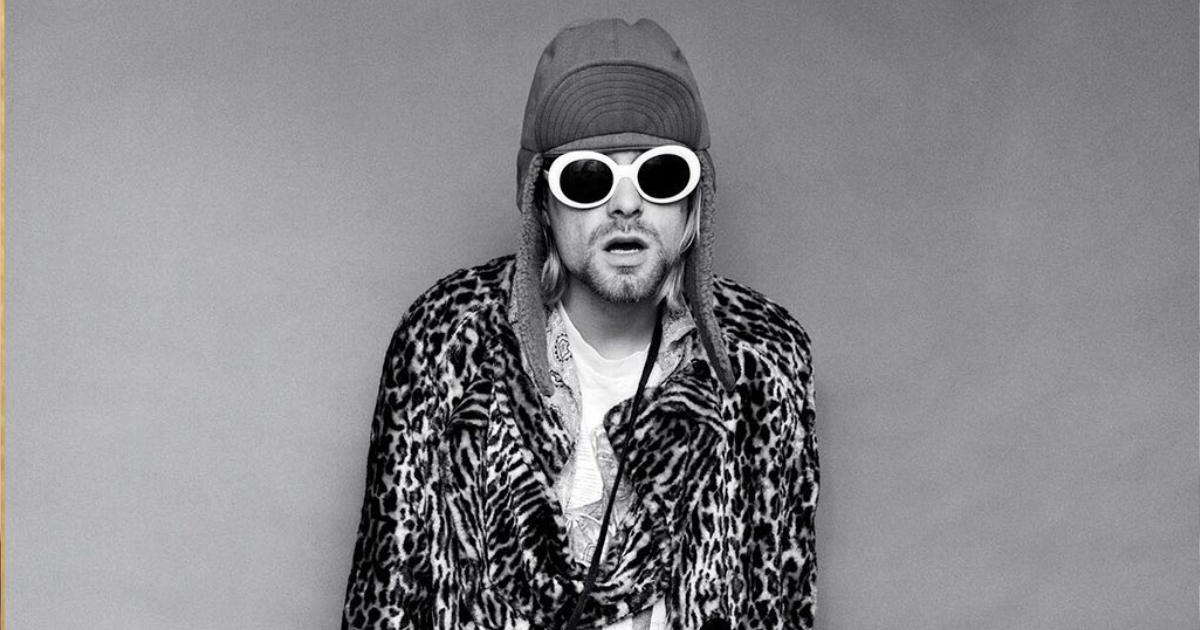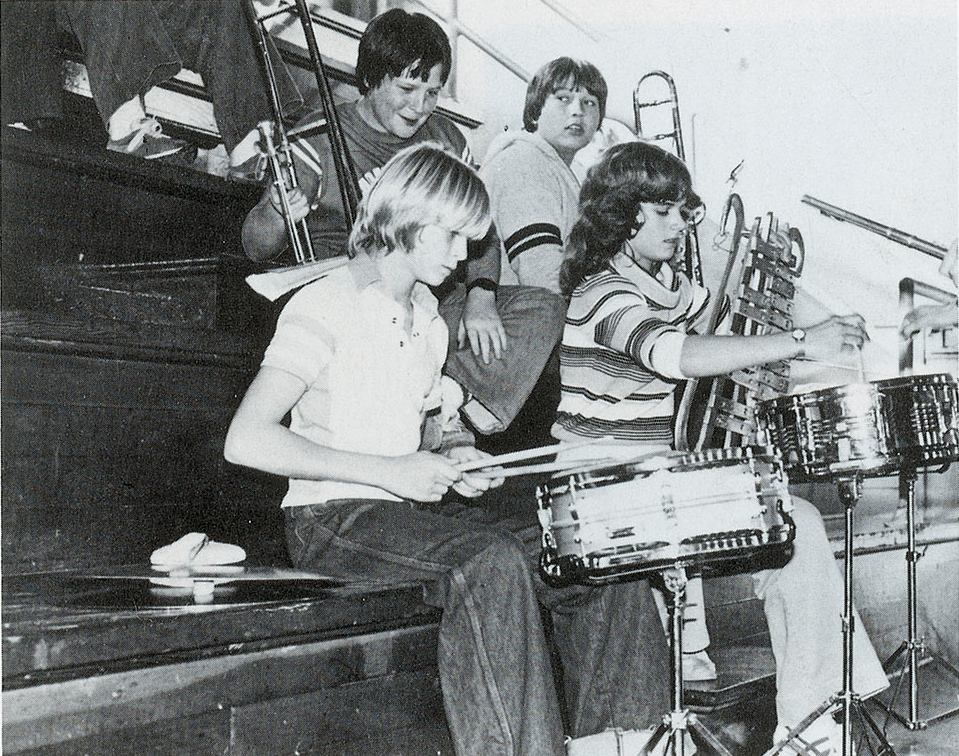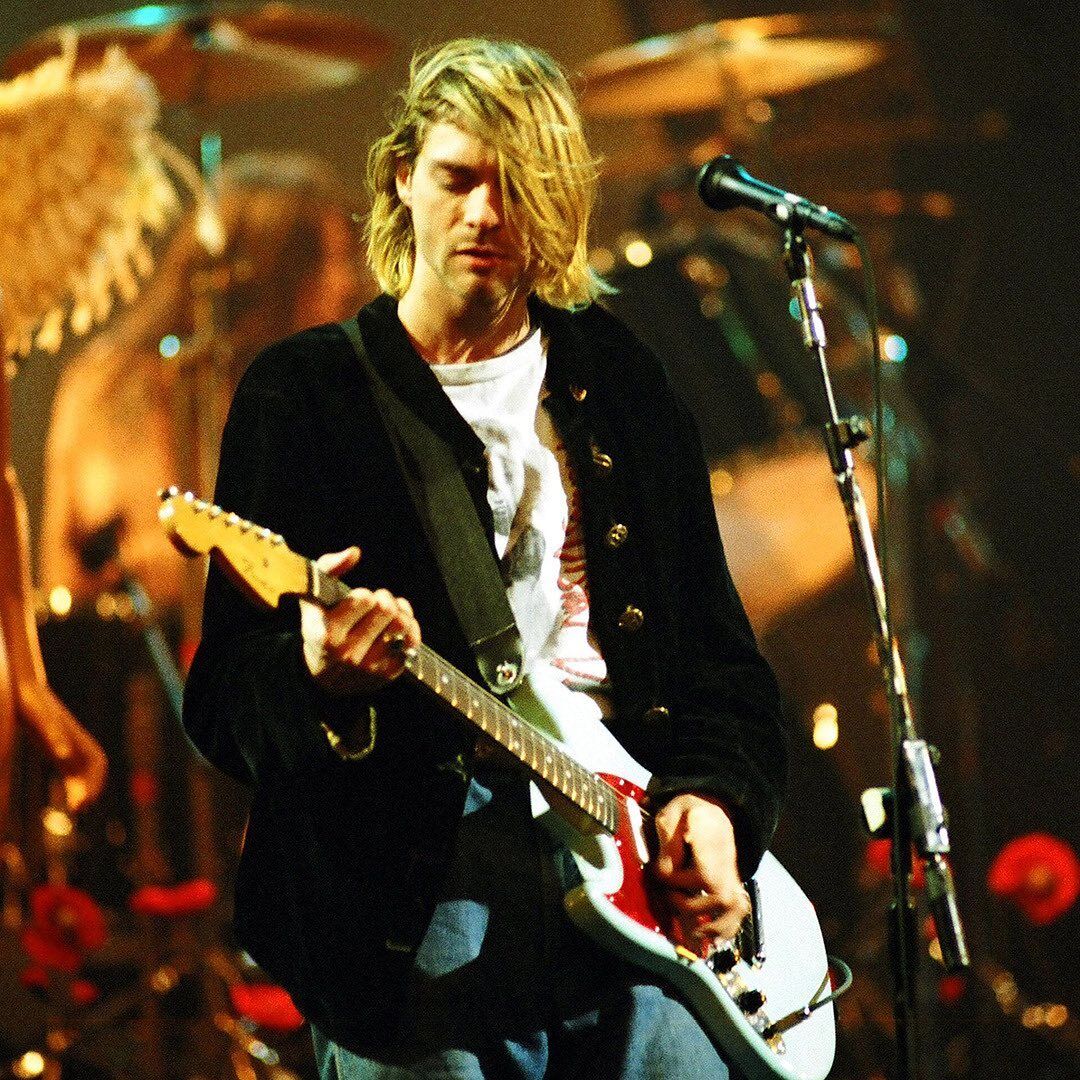Kurt Cobain – the voice of generation X
«I wanted to have the adoration of John Lennon but have the anonymity of Ringo Starr»

Who could have imagined that this blue-eyed baby with an angelic face, born in the quiet town of Aberdeen, hidden behind the curtain of mainstream America, would become the beginning of a new era in rock music? This is a town where men spent entire days working at sawmills or factories, and upon returning home, were met with hot dinners and wives in kitchen aprons.
The story of Kurt Cobain cannot be told without referencing Generation X – people born from the early 1960s to the early 1980s. The desire to not conform to any framework, so typical for people of that time, led to social changes in American society. More often, people chose self-realization overstaying in a marriage for the sake of the children. The number of divorces gradually increased.
Men’s incomes could no longer cover family expenses, and women could no longer afford to stay home as they once did. They were forced to go to work. The children of this generation were “less fortunate” than the previous one. School kids would return home on their own and open the door – no longer greeted by the smell of home-cooked meals or fresh-baked cookies. No smiling mom awaited them, this was the Latchkey Generation, the children with keys hanging from their necks so they wouldn’t lose them.
And Kurt Cobain, born in 1967, was one of those who felt all these changes firsthand. Kurt’s mother, a 19-year-old housewife, dreamed of her baby growing up in normal conditions, being well-dressed and well-fed. Despite a very limited budget, she bought him beautiful clothes and shoes, even a video camera – a rare and expensive thing at the time. It was thanks to this camera that video recordings of the childhood of the future rock star have been preserved, showing a boy surrounded by care and love.
Universal love and music – that was the world of little Kurt Cobain. An uncle who played in a band, an aunt skilled on the guitar, and a great-uncle who was a professional Irish tenor. These relatives often gathered in the future star’s home: doting on him, talking, dining, and singing songs while playing guitar for one another.
At just two years old, Kurt began humming lyrics to Beatles songs, to the delight and amazement of his family. They bought him a plastic drum set and a guitar. The creative child adored these toys. He would bang the drums all day, sing, draw, and sculpt – all in the company of his imaginary friend named Boddah, who was always there with him, everywhere.
Kurt’s family was concerned about this. They didn’t want people saying something was “wrong” with him. So they decided to “get rid” of Boddah by telling Kurt that he had gone off to fight in Vietnam. But Boddah never really left. The imaginary friend stayed with the future rock star until the very end of his life...

Photo: Montesano High School
A wound that "bled" until the end
The birth of another child in the Cobain family placed additional financial pressure on the parents. A lack of money and a growing desire to escape family life led to frequent fights in front of the children. Eventually, the parents divorced – a wound that never healed for Kurt.
The blue-eyed, cheerful boy took the breakup very hard. Day by day, he became more withdrawn, hiding inside his shell like the turtles he so loved.
He changed completely: always walking around sullen, behaving provocatively.
Teenagers of that time were growing up in a very difficult environment – poverty, crime, AIDS, and an intense fascination with “destructive substances,” to which Kurt also fell prey. But luckily, he had another passion: the guitar his uncle gave him on his 14th birthday. Although he didn’t start learning to play right away.
The outcast who loved "Perfume" by Patrick Süskind
In one interview, when asked about his favorite book, Kurt Cobain said:
“It’s the book ‘Perfume’. I’ve read it at least ten times. Every time I’m on a plane or bored, I read it again. I’m a hypochondriac, and this book really affects me – it makes me want to cut off my nose.”
He adored the book’s protagonist – a man who felt disgusted by people. That feeling, which was so familiar to Kurt, brought him closer to the “perfumer.” Even at the peak of his popularity, a level most musicians can only dream of, Kurt Cobain couldn’t stand crowds, didn’t like being on camera, and always wanted to retreat back into his shell.
Leaving home in 1982, Kurt stayed for a few months with his uncle. All he dreamed about at that moment was learning to play guitar. His uncle sent him to his friend Chuck, who was astonished by how quickly Kurt picked things up. He was sure the boy would become an excellent guitarist.
Soon after, Kurt left that home too...
The beginning of a musical career
Feeling unwanted and alone, Kurt moved in with a friend. He began imitating performances by famous musicians of the time. Eventually, Kurt wrote his own songs and formed his first band with some friends – though the group didn’t last long. They never recorded an album but gained valuable experience. Kurt didn’t give up. He recorded his best songs on a cassette and gave it to a friend. That friend was Krist Novoselic, who initially put off listening, but once he did, he agreed to form a band with Kurt. That was the beginning of their friendship – and of Nirvana.
In 1988, Kurt Cobain finally chose a name for his creation. He called it Nirvana. When asked what it meant, he replied: “Nirvana is us. Nirvana is the attainment of perfection.” The final lineup of the band formed in 1990, consisting of the songwriter and lead singer Kurt Cobain, drummer Dave Eric Grohl, and bassist Krist Novoselic.
Nirvana’s debut album, reflecting the spirit of the time, had a strange title – Bleach. It sold fairly well for a debut. Things were just beginning. Global fame lay ahead.
A breathtaking rise to fame
September 1991. The release of the first single from Nirvana’s second album. The song “Smells Like Teen Spirit” instantly catapulted the band from obscurity into a musical phenomenon. It became the anthem of Generation X. The lyrics were filled with metaphors that defied a single interpretation.
Teens in the ’90s didn’t hold back their voices, screaming out the chorus at the top of their lungs – the success was dizzying.
Two weeks later, the band released their second album titled Nevermind. The success exceeded all expectations. People were buying 300,000 albums a week. By January of the following year, the song had topped the charts, beating out even Michael Jackson’s brand-new Dangerous album.

This success changed the rules of the music industry: alternative rock was now popular and profitable.
You may have mixed feelings about Nirvana, but the cultural impact of the band is undeniable.
We just released the right album at the right time... Something changed in people’s minds. They were tired of fakes.
At the peak of Success
Kurt Cobain – sensitive, vulnerable, and prone to depression, couldn’t cope with the new life that came with such overwhelming success.
I wanted to have the adoration of John Lennon but have the anonymity of Ringo Starr. I didn't want to be a frontman. I just wanted to be back there and still be a rock and roll star at the same time.
Instead, he found himself in the eye of the storm. The mass obsession with Nirvana, sometimes more of a trendy fad than genuine appreciation, deeply irritated the band.
Sensing this unhealthy obsession, Kurt initially titled the band’s next album Sheep. One of its tracks, In Bloom, was dedicated to the band’s so-called most loyal fans. The video mocked them, showing the band dressed in slick, sugary outfits performing on a ’60s-style stage.
The band’s next album was far more difficult to digest than the previous one. But it was exactly what they wanted to release.
“I see how rock stars suddenly defame themselves and their music in pursuit of sales,” Kurt once said.
That statement is more relevant today than ever. Today’s pop music has fully morphed into a business that “sells” idols to new generations.
On September 13, 1993, Nirvana released its third and final album – In Utero. The strange title and anatomical cover reflected Kurt’s fascination with human anatomy.
The band did not bend to corporate pressures. The third album sounded far harsher than Nevermind. Though it didn’t match the previous album’s sales, Kurt used it to voice issues that truly troubled him – racism, women’s rights, discrimination, he screamed them without holding back.
A tragic end…
By nature sincere and painfully sensitive, Kurt Cobain, even as an adult, was never able to harden or learn to play by the rules of the adult world. Sadly, he couldn't find a constructive way to resolve his inner conflicts. The musician’s lifeless body was found in his home on April 5, 1994. In his farewell note, Kurt wrote: “I’m too much of an erratic, moody baby! I don’t have the passion anymore, and so remember, it’s better to burn out than to fade away. I haven't felt the excitement of listening to as well as creating music along with reading and writing for too many years now”
The gloomy musician, who became the icon of Generation X, couldn’t cope with the turbulence of his soul and life, leaving his fans in deep mourning.


